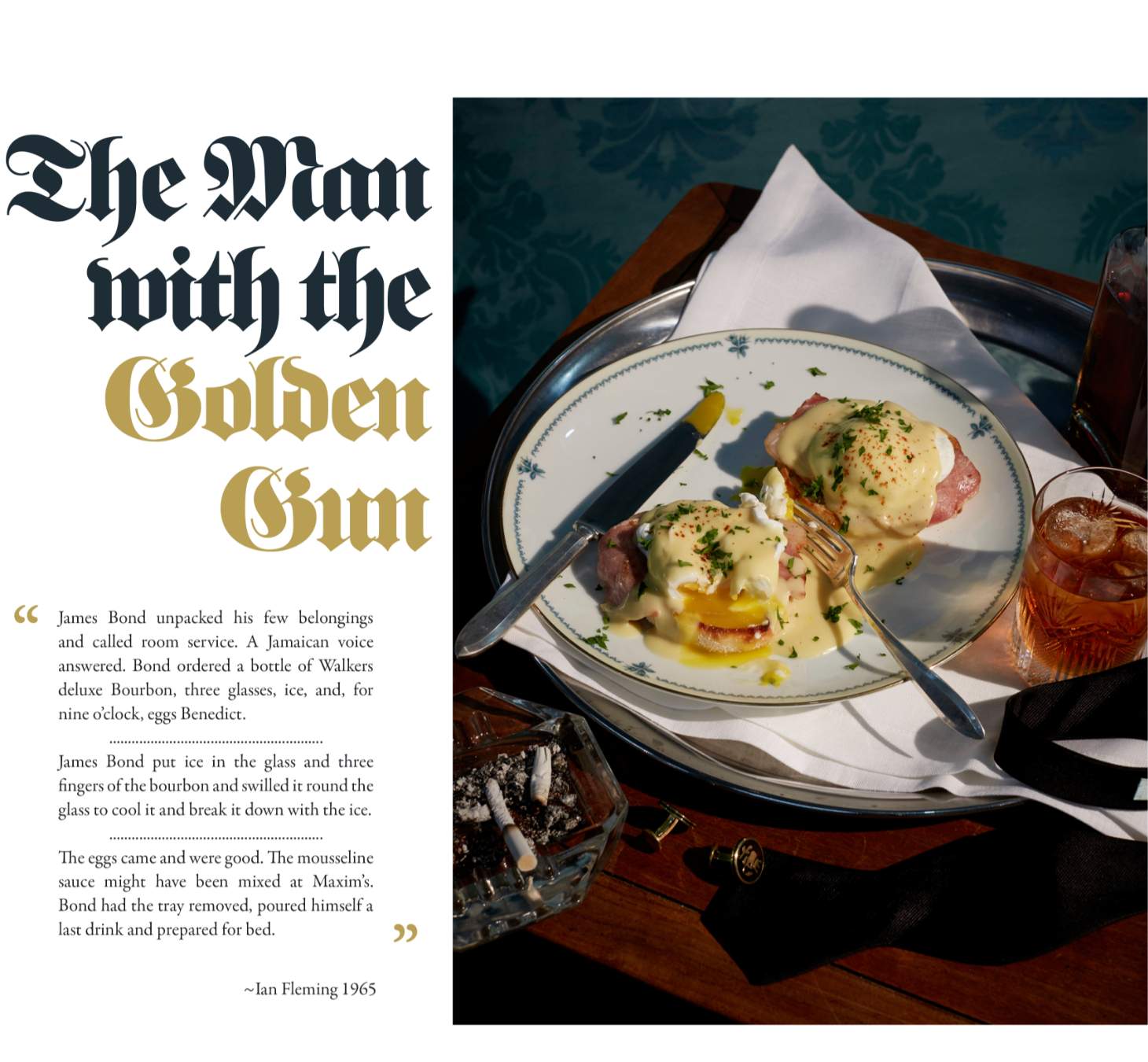5
minute read
Brooklyn photographer Henry Hargreaves teamed up with food artist Charlotte Omnès on a mission to recreate the tantalizing meals from James Bond's world in their intriguing photo series Dying To Eat.
Hargreaves has long been interested in espionage. His grandfather, New Zealand-born Major Charles Hargreaves, was a British SOE operative during WWII and a friend of 007 author Ian Fleming. So when Hargreaves and Omnès met during a project for the Food Network, they decided to collaborate in 2015 and delve into Fleming's novels, unveiling Bond's hidden culinary passions unexplored on the silver screen.
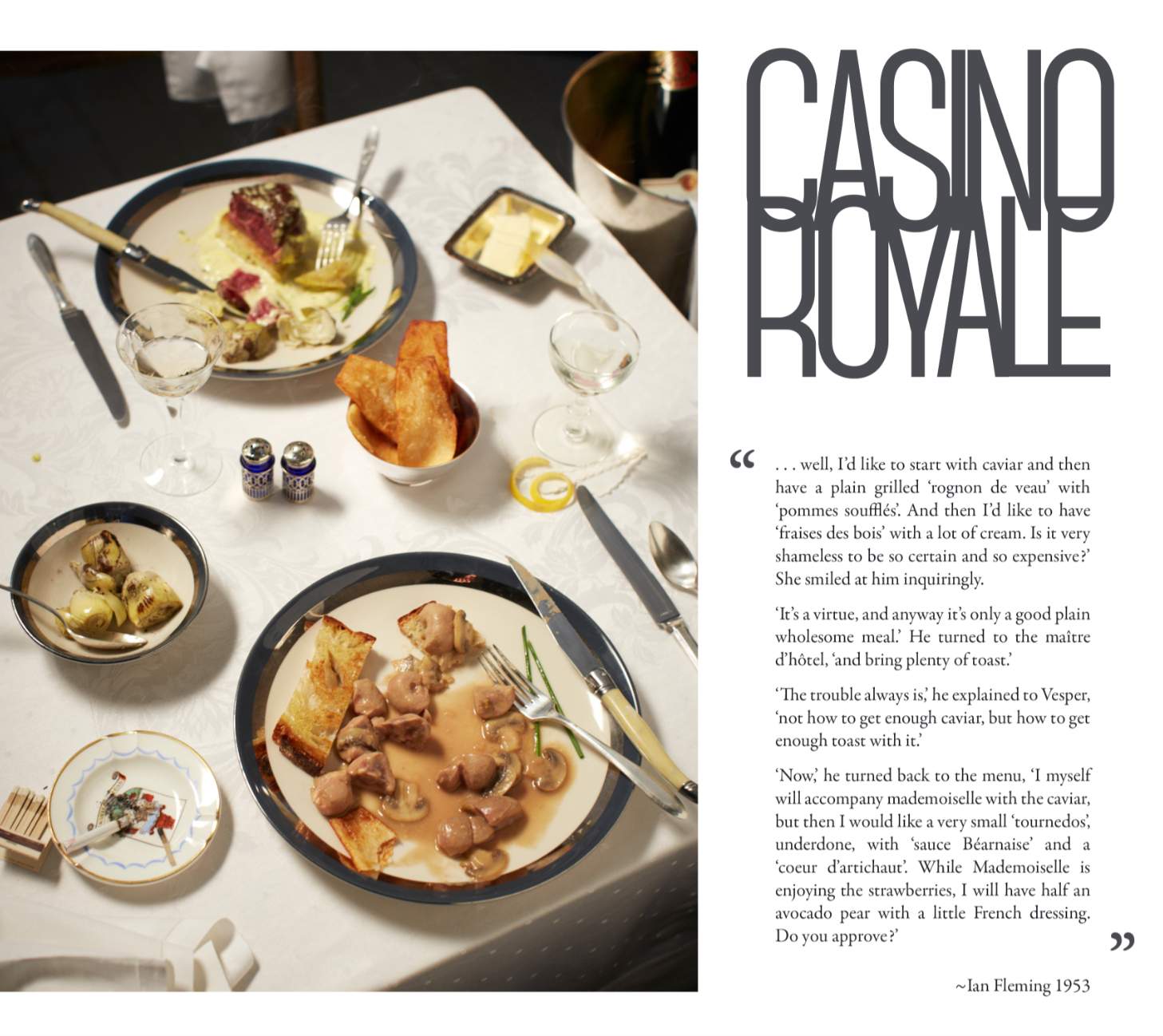
Casino Royale (1953)
Vivid depictions of exotic food were a form of escapism in post-WWII Britain where meat was rationed up until 1954 - a full nine years after the war had ended. Fleming’s first 007 book sets the tone for Bond’s sophisticated palate. “Well, I’d like to start with caviar and then have a plain grilled rognon de veau with pommes soufflés. And then I’d like to have fraises de bois with a lot of cream,” Bond says, turning to the Maître d'hôtel, “And bring plenty of toast.”

Live and Let Die (1954)
In the US, food rationing largely ended with the war and Americans could buy all the butter, cars, and nylons their hearts desired. There was no need for day dreaming about exquisite cuisine. Bond lives like a local whether visiting Harlem or the Deep South, dining on Little Neck Clams and Fried Chicken Maryland with bacon and sweet corn in Live & Let Die. “We have to have it," CIA officer Felix Leiter explains. “It’s the national dish.”
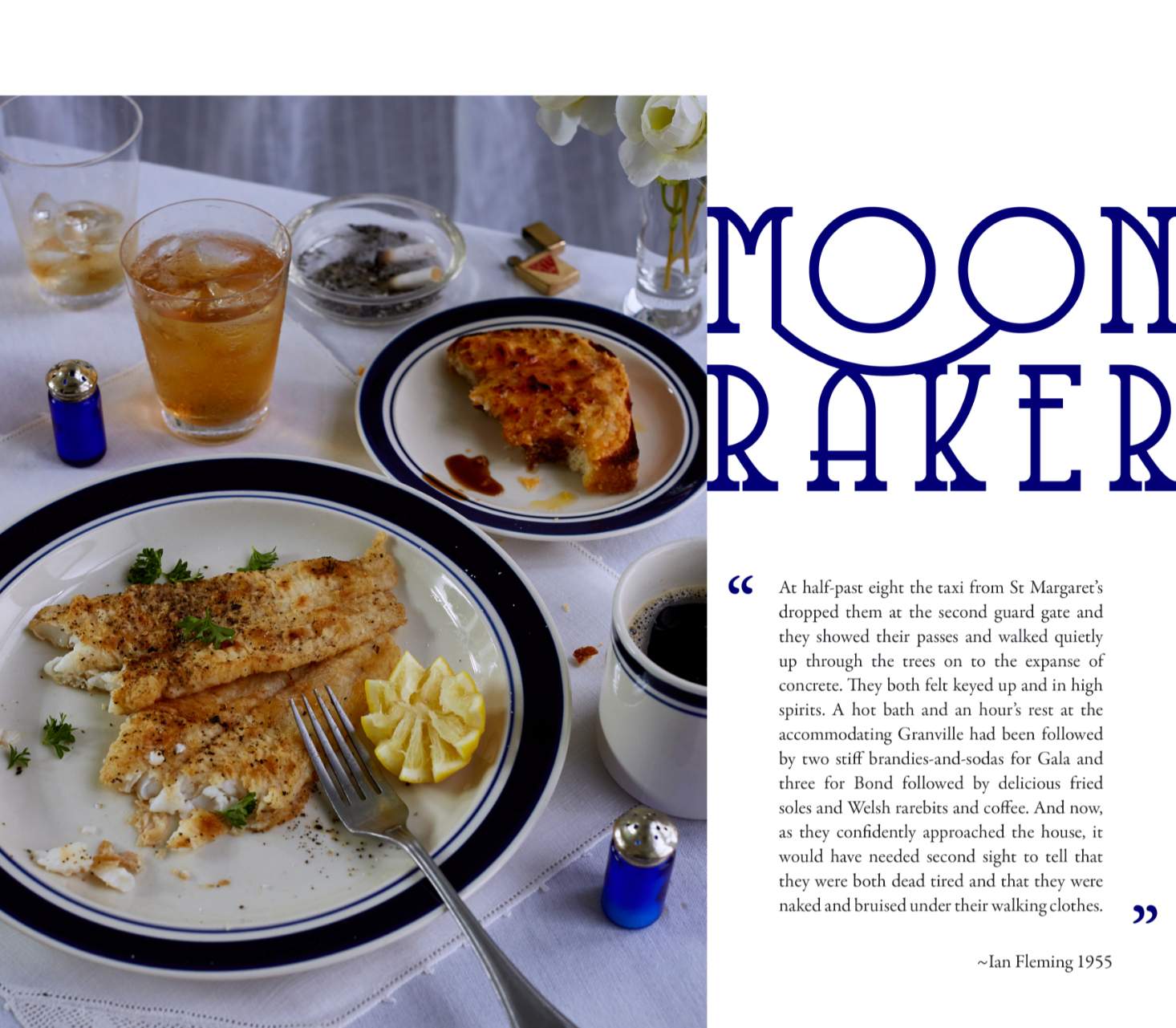
Moonraker (1955)
Moonraker is the only Bond novel set solely in Britain, giving Fleming an opportunity to write about England, bridge, and the luxuries of the Granville Hotel in St Margaret's Bay where Bond enjoys three stiff glasses of brandy and soda followed by fried soles and Welsh rarebit (hot cheese sauce served on toasted bread).

Diamonds Are Forever (1956)
Fueling their inspiration with Fleming’s rich descriptions, Hargreaves and Omnès meticulously recreated Bond's gastronomic indulgences. Bond savors American Brizzola beef, straight-cut across the bone, during a reunion with Leiter. The artists took advantage of props, carefully curated from antique stores, to infuse the photos with genuine ambiance - including matches from Sardi’s and cufflinks - prompting viewers to ponder the untold stories.
%20(1).jpg)
From Russia, With Love (1957)
Fleming's From Russia, With Love is recreated with the Slivovica, smoked ham, and peaches Bond shares with Tatiana before vanishing back into his dark existence. The novels introduced many memorable villains including Colonel Rosa Klebb and SMERSH executioner Donovan 'Red' Grant, but unless 007 dined with the enemy there was less emphasis on his foes' tastes. “Fleming primarily concentrated on detailing Bond's experiences to immerse the reader in the character,” Omnès said.
.jpg)
Dr. No (1958)
Fleming enjoyed the tranquil surroundings of his holiday home in the British colony of Jamaica - so much so it inspired the Bond series. “Would these books have been born if I had not been living in the gorgeous vacuum of a Jamaican holiday? I doubt it,” he said. Dr. No, the first of Fleming's novels to be turned into a movie in 1962, is set on the island where Bond enjoys rare steak with native vegetables and indulges in lobster.
.jpg)
Goldfinger (1959)
Hargreaves and Omnès' most memorable Bond culinary experience involved preparing the stone crab paired with lusciously buttered toast featured in Goldfinger. The intricacies of its creation made it the most demanding, yet ultimately the most gratifying, meal to savor after the photo shoot.
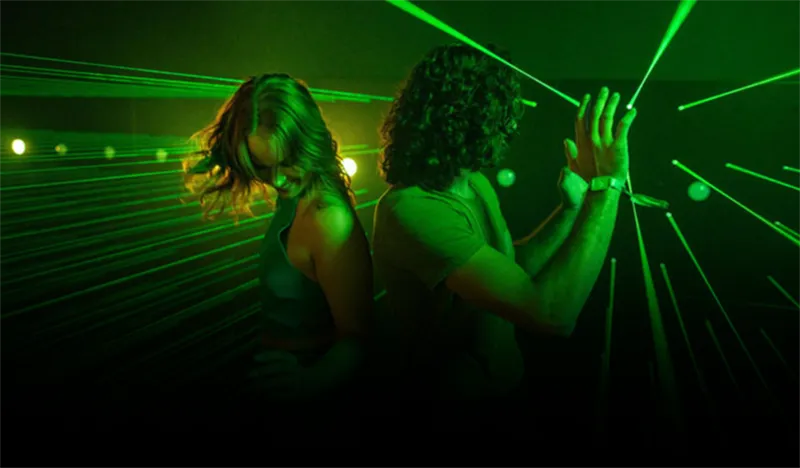
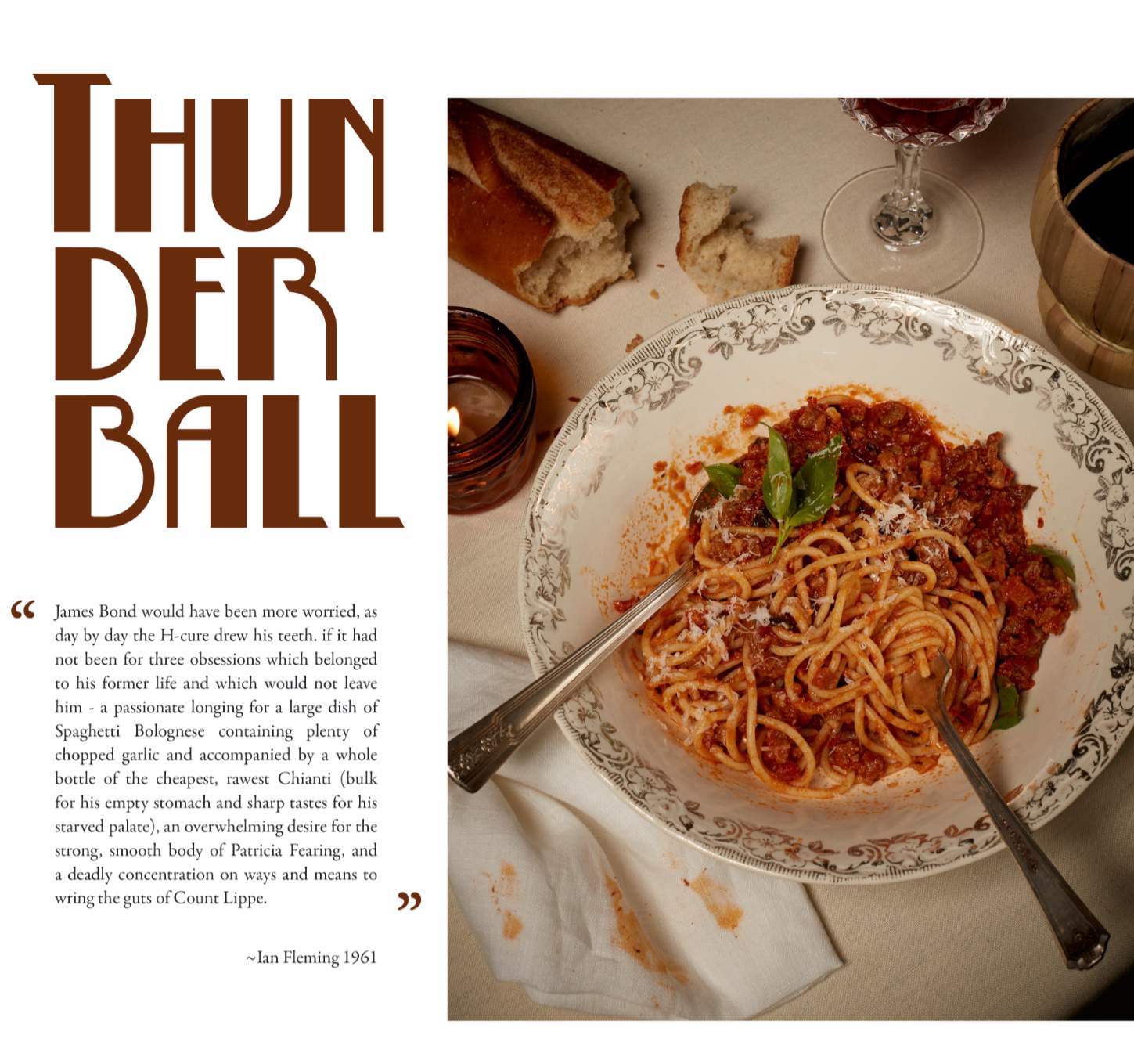
.jpg)
.jpg)
.jpg)
